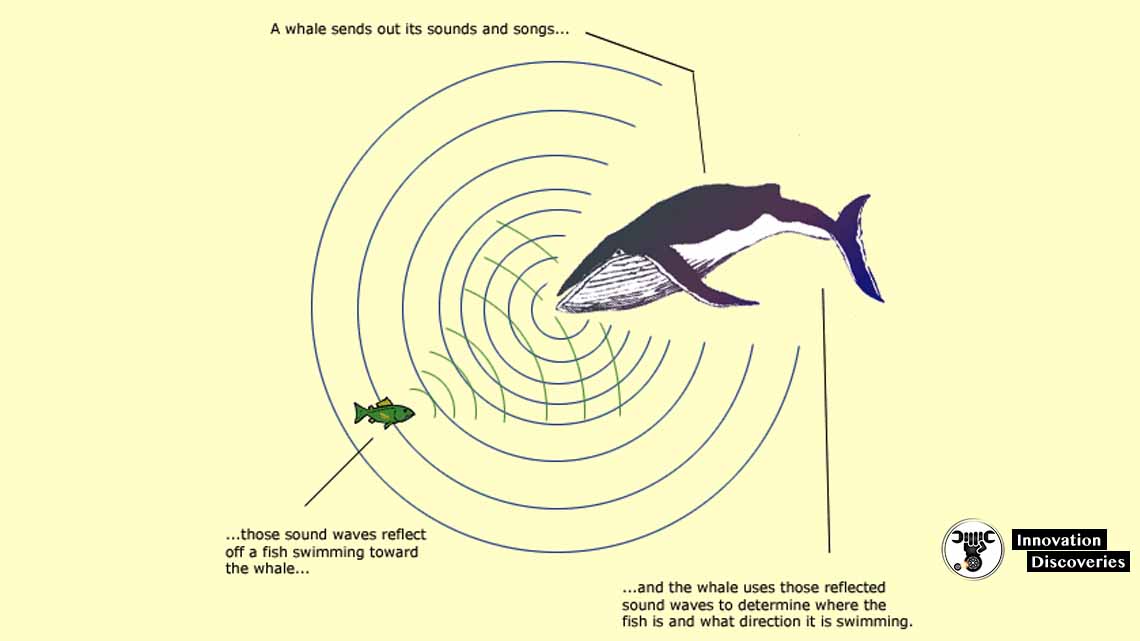Sonar (Sound Navigation And Ranging) is a technique that uses sound
Propagation to navigate,
Communicate with or detect objects on or under the surface of the water.
It measures the time between the transmission of a pulse and the return of the echo.
There are two basic types of Sonar
Active sonar
where a sound is generated (or pinged) by a projector, and the sound waves generated
Travel through the sea to the target, and are returned as sonar echoes,
To a hydrophone, which converts the sound into electricity.
Passive sonar
Passive Sonar uses the sound radiated by the target. This is a one-way transmission and a hydrophone picks up the sound and converts this into electricity.
There is a complex signal processing system, which converts these sounds
(Electrical impulses) for use in a modern sonar system,
That tracks the position of the target.
Working Of SONAR
Sonar is simply making use of an echo. When an animal or machine makes a noise, it sends sound waves into the surrounding environment. Those waves bounce off nearby objects, and some of them reflect the object that made the noise.
It’s those reflected sound waves that you hear when your voice echoes back to you from a canyon. Whales and specialized machines can use reflected waves to locate distant objects and sense their shape and movement.
Also, read: Submarine – principles, and design? How does it work?
The range of low-frequency sonar is remarkable. Dolphins and whales can tell the difference between objects as small as a BB pellet from 50 feet (15.24 m) away,
And they use sonar much more than sight to find their food, families, and direction. The LFA sonar being tested by the military can travel thousands of miles,
And could cover 80% of the earth’s oceans by broadcasting from only four points. The frequency that both whales and military use falls between 100 and 500 Hz. Whales send signals out between 160 and 190 Db,
The Navy has tested its sonar signals at levels up to 235 Db.

Military
- To detect, track and destroy enemy ships and submarines.
- To detect and destroy enemy underwater mines.
- Communicate using underwater sound as a medium.
- Navigate under ice.
- Safe navigation in shallow water.
- Determining navigational location.
- Measuring sound velocity.
- Emergency location beacon.
- Machinery repair.
Civilian
- Navigation.
- Diver communication.
- Fish finding.
- Wreck location and salvage.
- Animal location and tracking.
- Animal communications.
- Seismic measurements.
- Bottom topography.
- Volcanic measurements.
- Resource location.
- Machinery maintenance and repair.
- Metallurgic measurement.
- Sonography.
- Auditory research.
- Maritime.
Active Sonar
- Detecting & tracking submarines, ships, etc. (Under-water combat)
- Mapping the ocean floor. (Navigation/Surveillance)
- Detecting under-water mines.
Passive Sonar (Hydrophones)
- Passive detection/tracking: Listening to the noise from enemy submarines, surface vessels, etc. over long ranges.
P.S. Many animals use echolocation (biological sonar) for hunting & navigation purposes.
Also, read: Submarine – principles, and design? How does it work?


2 Comments